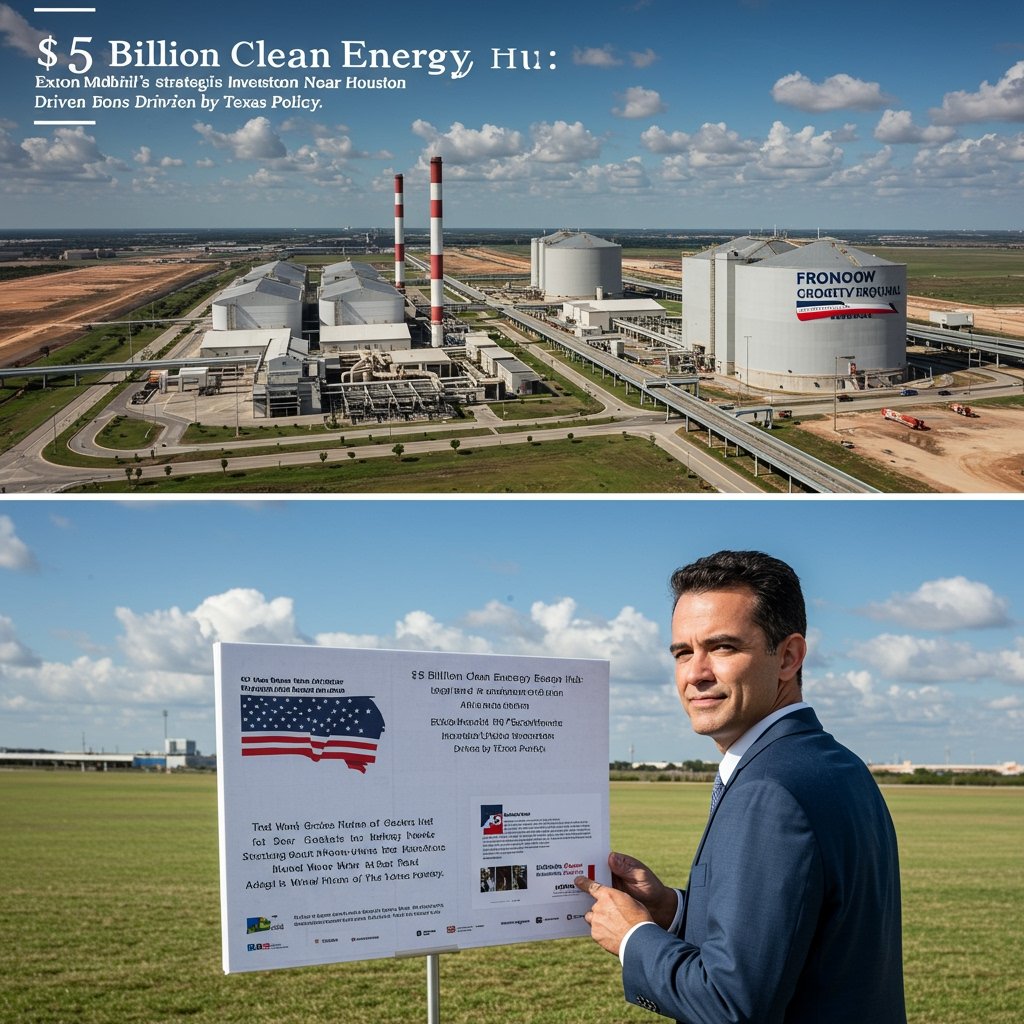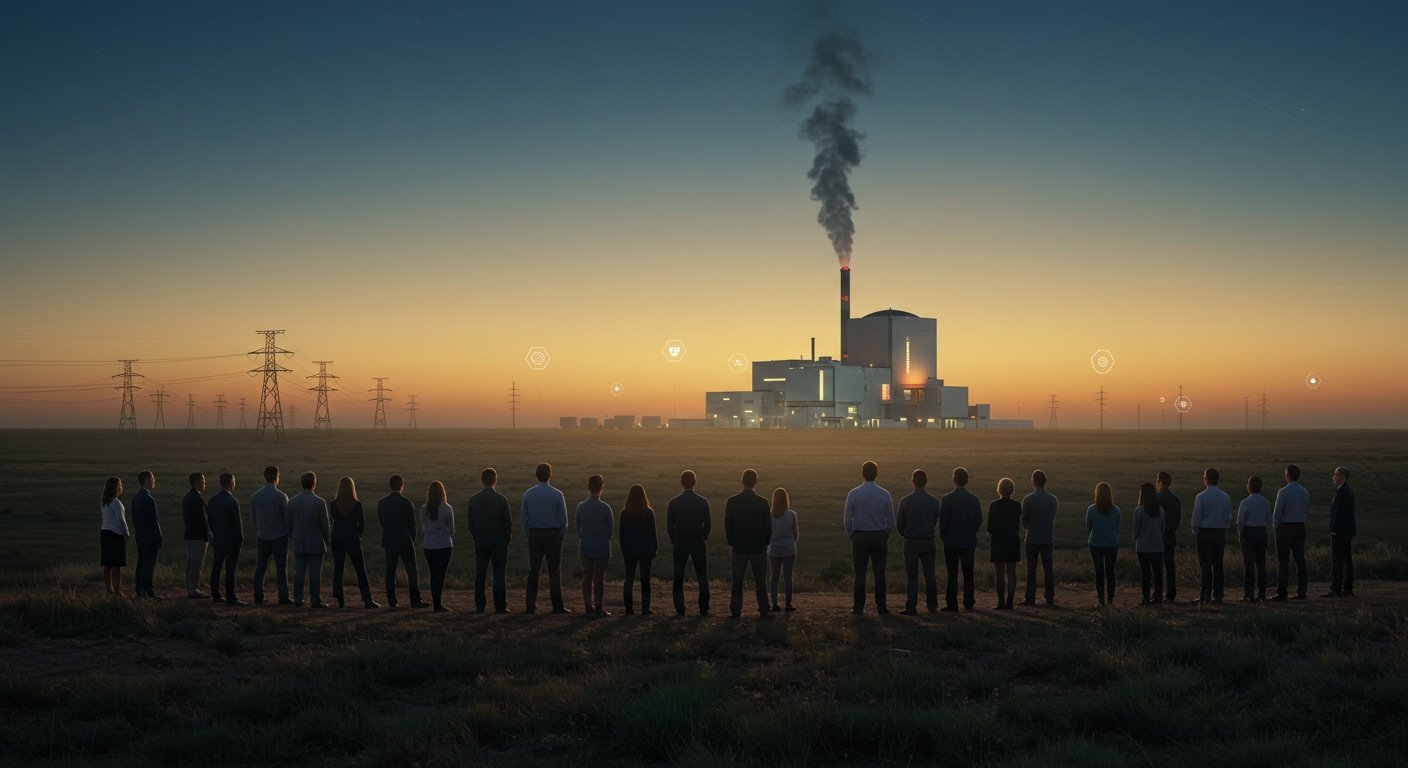ExxonMobil Unveils Major $5 Billion Clean Energy Hub Project Near Houston
Baytown, Texas – ExxonMobil has announced ambitious plans to develop a significant clean energy hub near its integrated complex in Baytown, located just outside Houston. The energy giant unveiled the proposed $5 billion investment on Saturday, marking a substantial step towards expanding its lower-emission business portfolio. This strategic project is primarily focused on advancing low-carbon hydrogen production and establishing extensive carbon capture capabilities, critical technologies for decarbonizing industrial operations.
Project Scope and Ambitious Carbon Capture Target
The core of the planned hub involves the production of hydrogen with significantly reduced carbon emissions, often referred to as blue hydrogen when paired with carbon capture. Simultaneously, the project will include facilities designed to capture carbon dioxide (CO2) emissions from industrial sources, including ExxonMobil’s own operations and potentially other nearby industrial facilities. The captured CO2 is then intended for safe, permanent subsurface storage. A key target for the project is to achieve the capacity to capture and store up to 10 million metric tons of CO2 annually by 2030. Achieving this scale of carbon capture would represent a major contribution to regional decarbonization efforts, equivalent to removing emissions from approximately 2 million gasoline-powered cars per year.
Strategic Location and Policy Influence
ExxonMobil executives highlighted several crucial factors underpinning the decision to locate this massive investment in the Houston area. Foremost among these was Texas’s favorable policy climate, which company leadership explicitly cited as a significant catalyst for the project. While specific policy details were not enumerated in the initial announcement, the state’s regulatory environment, potential incentives, and supportive stance towards energy infrastructure development were understood to be key considerations. Furthermore, the region’s already extensive pipeline infrastructure was identified as a critical advantage. The Texas Gulf Coast, particularly the Houston area, boasts a dense network of pipelines currently used for transporting various hydrocarbons and industrial gases. This existing infrastructure can potentially be leveraged or adapted for transporting hydrogen and, crucially, captured CO2 to storage sites, significantly reducing the logistical and capital costs associated with building entirely new networks.
Economic Impact and Job Creation
The construction and operation of the clean energy hub are projected to deliver substantial economic benefits to the Baytown and broader Houston region. The development phase is expected to require a significant workforce, with estimates pointing to the creation of approximately 1,000 temporary construction roles. These jobs will span a variety of trades and technical disciplines, providing a boost to the local construction sector over several years. Upon completion and commencement of operations, the hub is projected to support about 150 permanent operational jobs. These roles will likely involve skilled positions in facility management, process operations, maintenance, and technical support, contributing to the long-term employment base in the area. The project also represents a major capital injection into the local economy through procurement of materials, services, and taxes.
Timeline and Future Ambitions
The proposed timeline for the project indicates that construction is slated to begin in late 2025. This start date suggests a multi-year construction phase before the facility becomes fully operational and capable of meeting its stated carbon capture targets by the end of the decade. The 2030 target for capturing 10 million metric tons per year aligns with broader industry and governmental goals for scaling up carbon capture and storage (CCS) technologies as a means to address industrial emissions.
ExxonMobil’s move underscores a growing trend among major energy companies to invest in lower-emission business lines, often leveraging their existing expertise in large-scale project development, engineering, and infrastructure management. The Baytown hub is positioned strategically near one of the company’s largest integrated refining and petrochemical complexes, allowing for potential synergies in capturing emissions from these facilities directly.
This $5 billion investment signals ExxonMobil’s commitment to advancing low-carbon solutions at scale, driven in part by the perceived supportive business and policy environment in Texas and the logistical advantages of the Gulf Coast’s industrial and infrastructure landscape. The project represents a significant bet on the future roles of low-carbon hydrogen and carbon capture in the energy transition, aiming to position the company as a key player in these emerging sectors while potentially decarbonizing challenging-to-abate industrial emissions.






